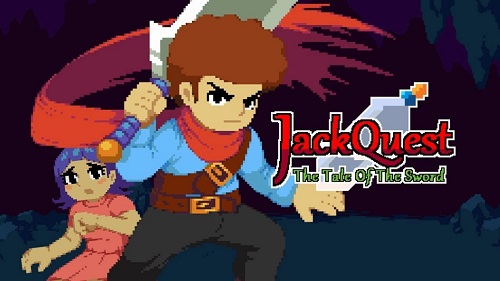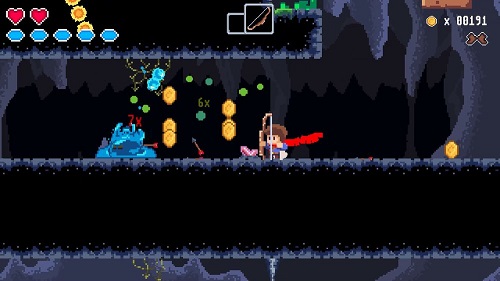I’ve been playing two picross games lately. Well, I guess that’s a lie because Pixel Puzzle Collection is still a thing.
I’ve been playing two picross games on my Switch lately. One, PICROSS: LORD OF THE NAZARICK is by nonogram verterans Jupiter, and is based on an obscure anime. An obscure anime that they never once name in this game. The other is Murder by Numbers, which is by Mediatonic, a video games company that I’ve never heard of. This one blends puzzle solving with story about solving murders and robot amnesia.
Both of these games have one major trait in common: they both mash a whole lot of text boxes into a puzzle game, which is the last place where a whole lot of text boxes should be. And maybe you can tell by my glib descriptions in the paragraph above, but only one manages to do so with any measure of success.
Picross: Lord of the Nazarick (I refuse to bend to the all-caps nonsense) is one of very few video games in which I’ve mashed past most of the text on my first playthrough. I tried to be courteous and listen to the story that they wanted to tell, but it was complete gibberish to me. And while it’s true that this particular edition of Picross was not intended for me, I still think that Jupiter failed utterly, because they should have made it somewhat accessible to non-fans. The first problem here is that, as I mentioned above, they never once use the name of the anime that this game is based on. It’s Overlord, by the way. I shouldn’t have had to do research to know that.
The other big problem is that it just assumes that you, the player, have a strong working knowledge of the plot and characters of Overlord. There are no introductions of any sort, and I found myself completely lost at every turn. It was baffling, and do nothing to make me want to learn more about this franchise. I never came to care about any of the characters, what their motivations were or what trials they’d been through, despite the fact that Jupiter so obviously wanted me to. Lastly, I’m working on an assumption that the story scenes in Picross: LotN are structured to sort of recap some highlights of Overlord’s story. Like a clip show, but told entirely through text. Which is a terrible way to do a clip show. ‘Nuff said.
So Picross: Lord of the Nazarick flops completely for someone like me, who has absolutely zero knowledge about its theme. Which is really too bad, because it’s another solid Jupiter-made Picross game, and they do the best nonograms in town. I just got so lost in the anime nonsense that I gave up on even trying to understand what all the text boxes wanted to tell me, and took it entirely as a puzzle game with a bunch of weird fantasy goobers and anime characters as puzzle solutions. And you know what, that’s exactly how one should play Picross. Intrusive text boxes have no place here. At least, that’s what I thought until I played Murder By Numbers…
Now this – this is how you make a puzzle game besieged by text boxes. Assuming you think that such a thing is necessary. Murder By Numbers splits the difference between visual novel and nonogram puzzles, and the two are interwoven in a way that creates a fun, unique product. This is the story of a young lady and her robot pal solving murders with the power of picross. How could it lose?
That is not to say that Murder By Numbers necessarily excels at either of its component genres. The nonogram puzzles, at least for an addict like me, are far too easy and lack any sort of alternate modes. It’s all stock-standard puzzles, and it’s exceedingly rare that they reach past 15×15 grids. The story part is actually really engaging, and I thought that most, if not all of the characters were really well-developed. However, the mystery part isn’t all that mysterious, as I had figured the killer within the first five minutes of three of the four cases. There is another big issue, but this one may be more on me…
See, when I saw the promotional material for Murder By Numbers, I got the impression that you’d get to do some actual sleuthing as you try to solve these crimes. People kept presumptively calling it “Ace Attorney meets Picross.” But no, it’s not like that at all. It’s just a straight visual novel and you have exactly zero input on how it unfolds. You don’t really get to search for clues, there are no red herrings, and there are certainly no courtroom scenes. The few decisions you do get to make are just window dressing, and will just say “nah, try another option” if you don’t choose correctly. While being completely removed from the plot was a bit of a bummer, I got over it because again, it’s a really good story! Of course it ends with a sequel hook, and I can’t wait to see the further adventures of this wacky crew.
And, you know, the picross was still fun. Even if it could have used a little more challenge or variety.
I suppose the lesson here is that you shouldn’t just ham-fistedly try to mash plot into a game where it doesn’t belong. If you’re going to try to shake up a genre, make sure that you’re designing the game from the ground up to make the best use of all the components. At least get them to a place where they harmonize with each other well enough to make the final product greater than the sum of its parts.


